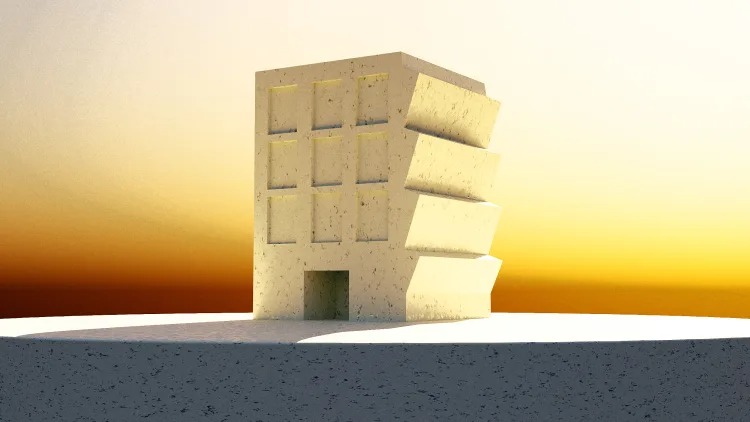- | 8:00 am
These zigzag walls help keep buildings cool during heat waves
Better design can keep residents cooler without cranking up the AC.

Extreme heat is probably costing you money: In one recent survey, seven out of 10 Americans said their electricity bills had gone up as heat waves get longer and more intense. But better design can help buildings stay cooler without cranking up the AC.
In a new study, researchers tested one way to help—a zigzag-shaped wall that can reflect heat from two directions. On a hot day, the walls can help a building stay as much as 5.5 degrees Fahrenheit cooler.

On roofs, certain coatings—like the world’s whitest white paint—can reflect heat into space, dramatically cooling the surface of the roof and the building inside. But the same coatings don’t work as well on walls because they’re exposed both to the cool sky and to heat that reflects from hot pavement. “These two directions require different properties for cool walls,” says Qilong Cheng, a postdoctoral researcher at Purdue University who worked on the study as a graduate student at Columbia University. “So we have this two-surface zigzag design, with one surface facing the sky and the other facing the ground.” By coating each surface with a different material, the wall can stay as cool as possible.
Retrofitting existing buildings would be relatively easy, Cheng says, and would involve mounting manufactured zigzag walls on top of the current facade. New buildings could use corrugated walls that are already common, with new coatings added. (Some architects are also beginning to use corrugated walls for cooling in a different way, with vertical fins that help move heat away from the building.)

The researchers calculated that if the walls were used on a midsize apartment building, they could cut HVAC energy use by 14%. Of course, that’s not just helpful for electric bills, but for emissions: as AC use surges, it’s a major contributor to climate change.
In some cases, if the walls are used along with cool roofs, it might be possible to avoid air-conditioner use completely on a hot day. In other cases, residents would just be able to use less energy to stay comfortable.
The researchers now plan to patent the design and turn it into a product. The catch: The design also means that walls absorb less heat in the winter. So to optimize energy use year-round, it likely makes the most sense in hotter cities with mild winters, like Los Angeles.






































